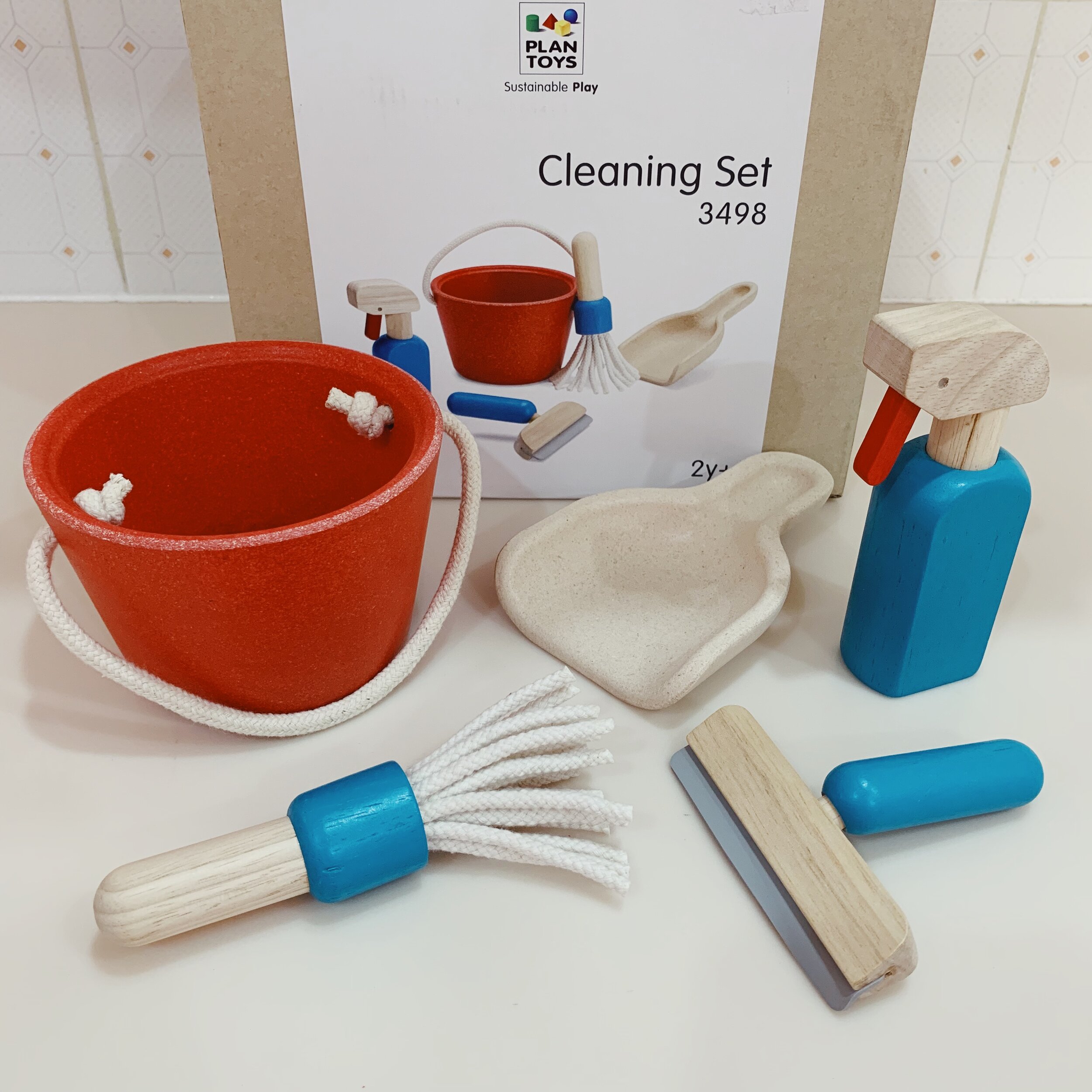Just as a child’s motor and communication abilities sequentially progress, so does their ability to play pretend and imagine. We’ve all seen young children mimic everyday activities that they see around them, like using the remote control to pretend they’re talking on the phone, or feeding their doll the way their parent feeds them. As they grow, you might notice that their ability to imagine becomes more complex, and their play develops beyond simply just repeating what they see. That stack of blocks they’re eager to show you is now a castle, and the tablecloth they’ve draped over two chairs is now their camping tent.
Please note: I am a participant of the Amazon Services Associates Program and have included “affiliate links” for all the toys. This means that when you click the pictures or links provided and make a purchase, I receive a small commission on the toy at no extra cost to you. You can read more about the Amazon Associates Program here.
Encouraging and nurturing the development of these skills is essential for intellectual, social, and emotional development, and can be done with or without toys. Everyday items can keep a child busy for hours, like the pots and pans they’ve pulled from your kitchen cabinet. You’ve likely gifted a child a very fancy toy, only to find that they had more fun playing with the cardboard box it came in. With that said, if you’re still looking for toys to encourage pretend play, I’ve got you covered. Take a look at three different ways you can encourage imaginative play with toys.
1) Role Play Toys
Understanding how others feel and that it may be different from how we feel is a skill that children learn as they grow. Costumes and themed Play Sets, such as a doctor’s kit, provide children a more hands-on and tangible way to pretend and take on roles of different characters.
Being dressed up as a policeman, a dinosaur, a superhero, or a princess allows a child to imagine what it’s like to be that character, what their life might be like, how they may feel, and what situations they may find themselves in – Literally putting themselves in someone else’s shoes.
Stepping into realistic and unrealistic roles in a playful way naturally encourages children to explore and problem-solve through different life situations. This helps develop empathy, cognition, and social emotional skills. Role-playing together with others also provides a fantastic opportunity for promoting interpersonal skills, cooperation, patience, and communication.
2) Character Toys
Little Friends Playground Play Set and Naomi
Toys such as Dolls, Stuffed Animals, or Action Figures allow children to be the creator of each one’s own individual personality and story. There might be one action figure in particular that is always going on exciting adventures around the house, or a doll that has to be dressed up for a special party she is planning to attend later.
Much like role play toys, these encourage children to imagine scenarios in which their characters might find themselves. They encourage the child to decide the back-story for each toy, where they come from, what kind of life they live, and how they relate to the other toys around them.
You might see one doll in particular emerge as the leader, while others might be coined the “good guy” or the “bad guy.” These scenarios allow the child to flex their social emotional muscles and think through character traits, feelings, interactions, and relationship dynamics.
3) Building Toys
Toys that allow a child to make something out of nothing, such as Blocks and Play Doh, present another wonderful opportunity for them to imagine all of the endless possibilities.
Open-ended toys like these, without any clear or specific purpose or rules to them, require the child to decide exactly what it is they’re making. Aside from the opportunities to imagine, these toys also allow a child to develop a sense of creativity and manipulate different materials in an artistic or inventive way. Blocks also help to develop a child’s visual spatial skills as they work to ensure the sound structure of their creation and take care not to knock it down. Play Doh, sand, and other sculpting toys also have the benefits of allowing a child to explore through a sensory kinesthetic experience.


